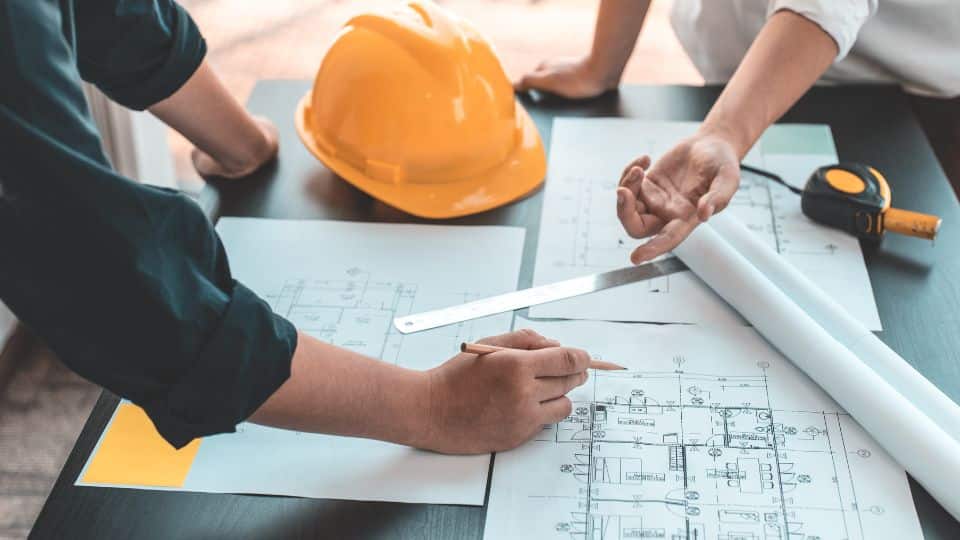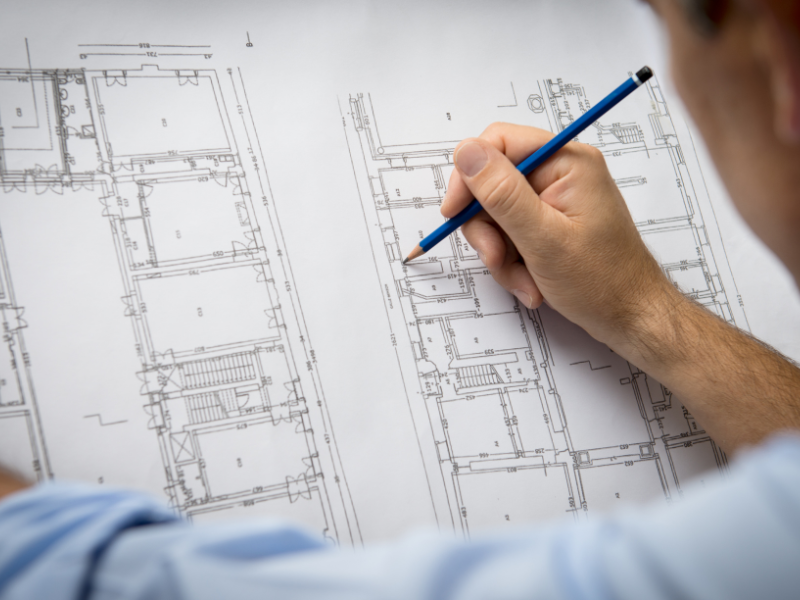Architect Guide to Green Building Materials
Architect Guide to Green Building Materials
Blog Article
Understanding the Diverse Profession Paths Available for Aspiring Architect
As an ambitious Architect, you have a world of job paths waiting for you. Whether you're drawn to standard design or the nuances of lasting layout, there's a niche that aligns with your rate of interests.
Typical Architecture: Designing Structures and Structures
Traditional style focuses on designing buildings and frameworks that blend functionality with visual allure. As you explore this field, you'll value the elaborate balance between form and function. You'll find out to attract ideas from historical styles, including components like symmetry, materials, and workmanship. Your designs can mirror social heritage, showcasing neighborhood customs while satisfying contemporary demands.
You'll develop skills in drafting, model-making, and website analysis, enabling you to visualize and connect your concepts efficiently. Involving with clients, you'll require to recognize their vision and translate it right into viable styles.
Additionally, developing codes and sustainability techniques are important in your job, ensuring your structures are risk-free and ecologically pleasant. As you grow in your job, you'll discover opportunities in domestic, industrial, or also restoration tasks, each offering unique obstacles. Embracing conventional architecture leads the way for a meeting career that pays homage to the past while forming the future.
Urban Planning: Shaping Neighborhoods and Public Spaces
As a hopeful Architect, you can play a necessary duty as a metropolitan coordinator, transforming exactly how neighborhoods connect and operate. By utilizing neighborhood interaction techniques, you'll guarantee that residents have a voice fit their setting. Plus, incorporating sustainable style principles will assist develop rooms that not just fulfill today's requirements however also protect the future.
Role of Urban Planners
While numerous may assume of architects as the single dreamers behind structures, urban organizers play an important function in forming the wider landscape of neighborhoods and public areas. By working together with different stakeholders, you'll aid design parks, transport systems, and household locations that advertise social communication and accessibility. Your competence in spatial design and community dynamics permits you to imagine future development while preserving social heritage.
Neighborhood Involvement Strategies
Effective community interaction approaches are important for urban organizers to assure that the voices of homeowners are listened to and valued in the preparation process. To foster meaningful discussion, you should focus on open online forums and workshops where community participants can reveal their concepts and worries. By proactively paying attention and integrating feedback, you'll create areas that mirror the area's requirements, eventually leading to even more effective and lasting urban settings.
Sustainable Design Concepts
When developing metropolitan spaces, integrating sustainable design principles is important for creating environments that thrive both environmentally and socially. You need to begin by concentrating on power performance, making use of products that minimize waste and advertise recycling. Think about integrating green spaces, like yards and parks, to improve biodiversity and improve air top quality. Promoting walkability and public transportation can reduce dependence on autos, fostering a healthier neighborhood.
Designing with water conservation in mind is likewise key-- believe about rainfall yards and permeable surface areas to manage stormwater. Entailing area members during the planning process assurances that the rooms you develop satisfy their demands and motivate social communication. By embracing these concepts, you'll add to vibrant, lasting urban landscapes that benefit everyone.

Landscape Architecture: Developing Sustainable Exterior Settings
As you discover landscape architecture, you'll find crucial layout principles that create beautiful and practical outside spaces. Sustainable practices play a vital role in making sure these environments grow while minimizing environmental effect. And also, you'll find a selection of profession possibilities that allow you to make a real difference in how individuals communicate with nature.
Style Concepts in Landscape
Comprehending layout concepts in landscape style is crucial for producing sustainable exterior atmospheres that balance with nature. You'll require to ponder components like balance, proportion, and range to guarantee your layouts really feel cohesive and welcoming. Incorporating native plants not only boosts biodiversity yet additionally reduces water use, making your landscape resistant. Assume concerning the flow of space and exactly how people communicate with it; pathways and seating locations ought to welcome expedition and leisure. In addition, take notice of seasonal changes, making with products that enhance the environments year-round (Architect). By focusing on sustainability and appearances, you can produce outdoor spaces that enrich the area and advertise wellness. Accepting these principles will set a strong foundation for your profession in landscape architecture.
Sustainable Practices Summary
Lasting practices in landscape design not just concentrate on aesthetics but also focus on environmental health and source conservation. You can develop areas that promote dirt health, such as utilizing organic materials and practicing permaculture concepts. Ultimately, these practices assure your layouts benefit both people and the atmosphere for years to come.
Career Opportunities Exploration
With a strong foundation in sustainable techniques, landscape design supplies a range of job courses that enable you to make a significant effect on the atmosphere. You could function as a landscape designer, producing cosmetically pleasing and functional exterior spaces, or concentrate on eco-friendly reconstruction, helping to revitalize damaged environments. Urban coordinators often team up with landscape architects to create environment-friendly areas in city setups, improving city livability. If you're passionate regarding education and learning, take into consideration becoming a landscape style educator, inspiring future generations. Furthermore, you may work with he has a good point nonprofits concentrated on ecological sustainability or involve in study to introduce new methods. Each course not just shapes attractive atmospheres but also cultivates a healthier planet for future generations.
Sustainable Style: Concentrating on Eco-Friendly Practices
As you explore your career in architecture, embracing eco-friendly practices can set you apart in a competitive field. Lasting design concentrates on creating structures that minimize ecological effect while enhancing passenger well-being. By incorporating sustainable products, energy-efficient systems, and sustainable structure methods, you'll add to a greener future.
Beginning by gaining knowledge of environment-friendly accreditations like LEED or BREEAM, which can strengthen your qualifications. Consider exactly how all-natural light, air flow, and thermal efficiency can optimize layout. Collaborate with designers and ecological specialists to innovate remedies that decrease waste and conserve sources.
Don't neglect the importance of area participation-- appealing regional stakeholders can influence designs that balance with the setting. As customers progressively focus on sustainability, your knowledge in environment-friendly techniques will not only attract projects yet also accomplish your interest for liable architecture. Embrace this important element of the career, and view your occupation flourish.
Historical Preservation: Shielding and Bring Back Cultural Heritage
While you begin on your architectural journey, think about the essential role of historical preservation in maintaining our cultural heritage. This field focuses on the defense and repair of substantial structures, websites, and frameworks that inform the tales of our past. By taking part in historical conservation, you'll assist safeguard the building legacy that shapes community identification.
As a historic conservation Architect, you'll examine historic value and examine the problem of structures. You'll work carefully with guardians and chroniclers to guarantee authentic reconstruction methods are employed. This job course enables you to blend creative thinking with research study, enabling you to make remedies that appreciate original products and craftsmanship.
Your work not just adds to sustainability by recycling existing buildings but likewise promotes a feeling of pride within communities. Welcoming this course will certainly assist you end up being a guardian of background, protecting the stories and aesthetics that enrich our lives.
Interior Style: Enhancing Indoor Spaces
Historical preservation and interior architecture both share a commitment to enhancing the constructed environment, yet they focus on different aspects. While historical conservation stresses preserving a structure's historical and social worth, indoor style zeroes in on enhancing indoor areas for performance and looks.
As a hopeful Architect, you'll discover that indoor style enables you to mix creativity with technological abilities. You'll make rooms that not only look good yet also promote convenience and efficiency. This field includes recognizing exactly how light, color, and products interact within a room, influencing mood and usability.
You'll service numerous jobs, from domestic homes to industrial workplaces, making sure that each setting satisfies the needs of its owners. By focusing on customer experience, you can change interiors right into motivating and practical areas, making a significant influence on just how individuals interact with their environments. Embrace the chance to improve interior atmospheres and form the means individuals work and live.
Industrial Layout: Merging Functionality With Visual Appeals
Commercial layout plays a vital role in creating items that seamlessly mix aesthetic appeals with functionality, ensuring that what you utilize day-to-day is not only visually appealing however likewise useful. As a hopeful Architect, you could immerse on your own in this field, concentrating on making whatever from furnishings to customer electronics. Your work involves understanding customer needs, products, and manufacturing procedures, enabling you to create cutting-edge options that improve day-to-day experiences.
In commercial style, you'll typically work together with designers, producers, and online marketers, making sure that your styles are not just gorgeous yet additionally practical. This click here for more job path provides a vibrant environment where imagination meets functionality, making it a gratifying choice for engineers interested in shaping the products of tomorrow.
Frequently Asked Concerns
What Educational Qualifications Do I Required to Come To Be an Architect?
To come to be a designer, you'll need a specialist degree in design, normally a Bachelor's or Master's. In addition, you'll have to finish a teaching fellowship and pass the Architect Enrollment Examination to exercise legally.
Exist Qualification Demands for Various Building Career Paths?
Yes, there're accreditation requirements for various building paths. Architect. You'll require to pass tests, total internships, and occasionally pursue specialized training, depending upon your picked focus, like landscape design, city design, or historical preservation
What Software Program Skills Are Necessary for Architects Today?

How Can I Gain Practical Experience While Examining Design?
You can acquire sensible experience by interning at architectural companies, taking part in layout competitors, volunteering for area jobs, or working together with classmates on real-world jobs. These possibilities enhance your abilities and construct important connections in the market.
What Job Opportunities Exist Outside Conventional Design Firms?
You can explore various work possibilities outside conventional architecture companies, like urban planning, interior decoration, landscape style, building and construction administration, real estate development, or perhaps roles in sustainability consulting. Each deals unique obstacles and incentives.
Whether you're drawn to conventional style or the nuances of sustainable design, there's a specific niche that lines up with your rate of interests.When designing urban spaces, including sustainable layout concepts is important for producing settings that grow both environmentally and socially.As you explore landscape style, you'll click find necessary style principles that develop practical and stunning exterior areas.Recognizing design concepts in landscape architecture is important for creating sustainable exterior atmospheres that balance with nature.In commercial layout, you'll often collaborate with suppliers, designers, and marketing experts, making sure that your designs are not just stunning yet additionally possible.
Report this page